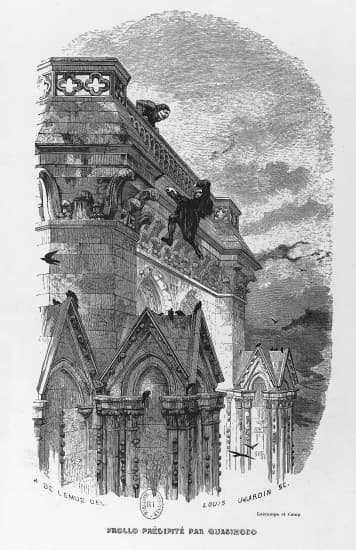
As these are old books, we processed each page manually and make them readable but in some cases some pages which are blur or missing or black spots. This book is printed in black & white, sewing binding for longer life, Printed on high quality Paper, re-sized as per Current standards, professionally processed without changing its contents. His legacy has been honored in many ways, including being placed on francs.Leather Binding on Spine and Corners with Golden Leaf Printing on round Spine (extra customization on request like complete leather, Golden Screen printing in Front, Color Leather, Colored book etc.) Reprinted in 2022 with the help of original edition published long back. Though a committed royalist when he was young, Hugo's views changed as the decades passed, and he became a passionate supporter of republicanism his work touches upon most of the political and social issues and artistic trends of his time. He also produced more than 4,000 drawings, which have since been admired for their beauty, and earned widespread respect as a campaigner for social causes such as the abolition of the death penalty. Outside France, his best-known works are the acclaimed novels Les Misérables, 1862, and Notre-Dame de Paris, 1831 (known in English as The Hunchback of Notre-Dame). Among many volumes of poetry, Les Contemplations and La Légende des siècles stand particularly high in critical esteem. In France, Hugo's literary fame comes first from his poetry but also rests upon his novels and his dramatic achievements. He is considered one of the greatest and best known French writers. Victor Marie Hugo (French pronunciation: 26 February 1802 – ) was a French poet, novelist, and dramatist of the Romantic movement. A commanding and epic melodrama fully utilizing the extremes of passion and religion in the bygone Gothic era, Hugo's novel explores social justice through the suffering of his characters, though with a compassion and melancholy that belies the author's conviction in the impossibility of salvation in his existing world.


Though still hated by everyone, Quasimodo's sleeping soul awakens and grows in an extraordinary conversion to the sublime, allowing him to care for and protect Esmeralda even as those who admired her come to fear and despise her. The severe priest, though he looks after the grotesque Quasimodo, ignores the public persecution that the man suffers whenever he leaves the Cathedral, and it is at just such moment of vulnerability that the lovely young Gypsy Esmeralda shows Quasimodo an act of kindness that leads to his inner transformation. It is there that the deformed Quasimodo has gone deaf ringing the grand church's bells for his adoptive father Dom Claude Frollo.


Though written at the beginning of the Romantic era, this remarkable French historical romance takes place in medieval Paris at the Cathedral of Notre Dame.


 0 kommentar(er)
0 kommentar(er)
